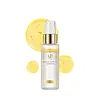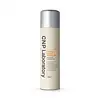What's inside
What's inside
 Key Ingredients
Key Ingredients

 Benefits
Benefits

 Concerns
Concerns

 Ingredients Side-by-side
Ingredients Side-by-side

Water
Skin ConditioningDipropylene Glycol
HumectantNeopentyl Glycol Diheptanoate
EmollientGlycereth-26
Humectant1,2-Hexanediol
Skin ConditioningNiacinamide
SmoothingHydroxyethyl Urea
HumectantPersea Gratissima Oil
Skin ConditioningButylene Glycol
HumectantBetaine
HumectantTuber Magnatum Extract
Skin ConditioningGlycerin
HumectantHelianthus Annuus Seed Oil
EmollientSorbitol
HumectantDipotassium Glycyrrhizate
HumectantDisodium EDTA
Tocopheryl Acetate
AntioxidantAdenosine
Skin ConditioningBifida Ferment Lysate
Skin ConditioningGlycine Soja Oil
EmollientSodium Palmitoyl Proline
Skin ConditioningArginine
MaskingBellis Perennis Flower Extract
Skin ConditioningCarbomer
Emulsion StabilisingFreesia Refracta Extract
Skin ConditioningHouttuynia Cordata Extract
Skin ConditioningLeontopodium Alpinum Extract
Skin ConditioningLilium Candidum Flower Extract
Skin ConditioningMorus Alba Bark Extract
Skin ConditioningNelumbo Nucifera Flower Extract
Skin ConditioningPanax Ginseng Root Extract
EmollientSaussurea Involucrata Extract
HumectantPotassium Sorbate
PreservativeAvena Sativa Kernel Extract
AbrasiveHydrolyzed Hyaluronic Acid
HumectantOcimum Basilicum Flower/Leaf/Stem Extract
TonicSalvia Hispanica Seed Extract
EmollientBixa Orellana Seed Oil
EmollientTocopherol
AntioxidantNymphaea Alba Flower Extract
Skin ConditioningParfum
MaskingLinalool
PerfumingHexyl Cinnamal
PerfumingLimonene
PerfumingCitronellol
PerfumingWater, Dipropylene Glycol, Neopentyl Glycol Diheptanoate, Glycereth-26, 1,2-Hexanediol, Niacinamide, Hydroxyethyl Urea, Persea Gratissima Oil, Butylene Glycol, Betaine, Tuber Magnatum Extract, Glycerin, Helianthus Annuus Seed Oil, Sorbitol, Dipotassium Glycyrrhizate, Disodium EDTA, Tocopheryl Acetate, Adenosine, Bifida Ferment Lysate, Glycine Soja Oil, Sodium Palmitoyl Proline, Arginine, Bellis Perennis Flower Extract, Carbomer, Freesia Refracta Extract, Houttuynia Cordata Extract, Leontopodium Alpinum Extract, Lilium Candidum Flower Extract, Morus Alba Bark Extract, Nelumbo Nucifera Flower Extract, Panax Ginseng Root Extract, Saussurea Involucrata Extract, Potassium Sorbate, Avena Sativa Kernel Extract, Hydrolyzed Hyaluronic Acid, Ocimum Basilicum Flower/Leaf/Stem Extract, Salvia Hispanica Seed Extract, Bixa Orellana Seed Oil, Tocopherol, Nymphaea Alba Flower Extract, Parfum, Linalool, Hexyl Cinnamal, Limonene, Citronellol
Water
Skin ConditioningPropanediol
SolventGlycerin
Humectant1,2-Hexanediol
Skin ConditioningPropolis Extract 0.02%
Skin ConditioningDimethicone
EmollientSodium Citrate
BufferingBetaine
HumectantSorbitol
HumectantHydrogenated Lecithin
EmulsifyingSorbitan Sesquioleate
EmulsifyingPEG-60 Hydrogenated Castor Oil
EmulsifyingCitric Acid
BufferingPelargonium Graveolens Flower Oil
MaskingButylene Glycol
HumectantPentylene Glycol
Skin ConditioningHyaluronic Acid
HumectantPanthenol
Skin ConditioningHydroxyphenyl Propamidobenzoic Acid
Skin ConditioningGluconolactone
Skin ConditioningLactobionic Acid
BufferingPantolactone
HumectantAscorbyl Palmitate
AntioxidantDisodium EDTA
Citronellol
PerfumingGeraniol
PerfumingWater, Propanediol, Glycerin, 1,2-Hexanediol, Propolis Extract 0.02%, Dimethicone, Sodium Citrate, Betaine, Sorbitol, Hydrogenated Lecithin, Sorbitan Sesquioleate, PEG-60 Hydrogenated Castor Oil, Citric Acid, Pelargonium Graveolens Flower Oil, Butylene Glycol, Pentylene Glycol, Hyaluronic Acid, Panthenol, Hydroxyphenyl Propamidobenzoic Acid, Gluconolactone, Lactobionic Acid, Pantolactone, Ascorbyl Palmitate, Disodium EDTA, Citronellol, Geraniol
 Reviews
Reviews

Ingredients Explained
These ingredients are found in both products.
Ingredients higher up in an ingredient list are typically present in a larger amount.
1,2-Hexanediol is a synthetic liquid and another multi-functional powerhouse.
It is a:
- Humectant, drawing moisture into the skin
- Emollient, helping to soften skin
- Solvent, dispersing and stabilizing formulas
- Preservative booster, enhancing the antimicrobial activity of other preservatives
Betaine is a common humectant (a substance that promotes retention of moisture). It's known to be gentle on the skin and can help balance hydration.
This ingredient is best for improving hydration and soothing irritated skin. Studies also show it helps even out skin tone.
Fun fact: Betaine is naturally created in the skin and body. The kind found within cosmetic products can be either plant-derived or synthetic.
Another name for betaine is trimethylglycine.
Learn more about BetaineButylene Glycol (or BG) is used within cosmetic products for a few different reasons:
Overall, Butylene Glycol is a safe and well-rounded ingredient that works well with other ingredients.
Though this ingredient works well with most skin types, some people with sensitive skin may experience a reaction such as allergic rashes, closed comedones, or itchiness.
Learn more about Butylene GlycolCitronellol is used to add fragrance/parfum to a product. It is often derived from plants such as roses. In fact, it can be found in many essential oils including geranium, lavender, neroli, and more. The scent of Citronellol is often described as "fresh, grassy, and citrus-like".
Since the Citronellol molecule is already unstable, Citronellol becomes irritating on the skin when exposed to air.
Citronellol is a modified terpene. Terpenes are unsaturated hydrocarbons found in plants. They make up the primary part of essential oils.
Citronellol is not able to be absorbed into deeper layers of the skin. It has low permeability,
Citronellol is also a natural insect repellent.
Learn more about CitronellolDisodium EDTA plays a role in making products more stable by aiding other preservatives.
It is a chelating agent, meaning it neutralizes metal ions that may be found in a product.
Disodium EDTA is a salt of edetic acid and is found to be safe in cosmetic ingredients.
Learn more about Disodium EDTAGlycerin is already naturally found in your skin. It helps moisturize and protect your skin.
A study from 2016 found glycerin to be more effective as a humectant than AHAs and hyaluronic acid.
As a humectant, it helps the skin stay hydrated by pulling moisture to your skin. The low molecular weight of glycerin allows it to pull moisture into the deeper layers of your skin.
Hydrated skin improves your skin barrier; Your skin barrier helps protect against irritants and bacteria.
Glycerin has also been found to have antimicrobial and antiviral properties. Due to these properties, glycerin is often used in wound and burn treatments.
In cosmetics, glycerin is usually derived from plants such as soybean or palm. However, it can also be sourced from animals, such as tallow or animal fat.
This ingredient is organic, colorless, odorless, and non-toxic.
Glycerin is the name for this ingredient in American English. British English uses Glycerol/Glycerine.
Learn more about GlycerinSorbitol is a sugar alcohol. It is a hydrating and moisturizing agent created from the reduction process of glucose.
Most sorbitol is usually made from potato starch. It is also found in fruits such as apples and pears.
As a humectant, Sorbitol helps draw water to the skin. This helps keep the skin hydrated. Sorbitol also helps create a thicker texture in products. You might find sorbitol in your toothpaste and other gels.
It is a non-irritating ingredient that is great for those with dry skin.
Sorbitol is a prebiotic. It helps promote the growth of healthy bacteria on your skin. The bacteria on your skin form a microbiome. This microbiome helps protect your skin from infection and harmful bacteria.
Learn more about SorbitolWater. It's the most common cosmetic ingredient of all. You'll usually see it at the top of ingredient lists, meaning that it makes up the largest part of the product.
So why is it so popular? Water most often acts as a solvent - this means that it helps dissolve other ingredients into the formulation.
You'll also recognize water as that liquid we all need to stay alive. If you see this, drink a glass of water. Stay hydrated!
Learn more about Water